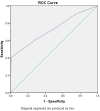The Prevalence and Associated Factors of Attention Deficit Hyperactivity Disorder Among Primary School Children in Amman, Jordan
- PMID: 37214023
- PMCID: PMC10199271
- DOI: 10.7759/cureus.37856
The Prevalence and Associated Factors of Attention Deficit Hyperactivity Disorder Among Primary School Children in Amman, Jordan
Abstract
Objective Attention deficit hyperactivity disorder (ADHD) is a common neurodevelopmental disorder characterized by impaired levels of inattention, disorganization and/or hyperactivity-impulsivity. The aim of this study was to estimate the prevalence of ADHD among primary school children in Jordan and assess the potential risk factors. Method A cross-sectional study was conducted in 2022-2023 on 1563 school children aged six to 12 years. ADHD was assessed using parent and teacher versions of the Conners Rating scale. Risk factors were evaluated through a sociodemographic questionnaire. A p-value set at <.05 was considered statistically significant. Results ADHD prevalence based on parents' and teachers' perspectives was 27.7% and 22.5%, respectively. Males, smoking during pregnancy, low birth weight, low parental education and unemployment, and public schools had increased ADHD rates. Conclusion ADHD presents a major problem among primary school children in Jordan. Early detection, prevention, and management of this disease require parents' and teachers' awareness and risk factor control.
Keywords: adhd; child psychiatry; conners; prevalence; schoolchildren.
Copyright © 2023, Abbasi et al.
Conflict of interest statement
The authors have declared that no competing interests exist.
Figures
Similar articles
-
Symptoms of inattention and hyperactivity in children with habitual snoring: evidence from a community-based study in Istanbul.Child Care Health Dev. 2005 Nov;31(6):707-17. doi: 10.1111/j.1365-2214.2005.00561.x. Child Care Health Dev. 2005. PMID: 16207229
-
Primary School Children's Self-Reports of Attention Deficit Hyperactivity Disorder-Related Symptoms and Their Associations With Subjective and Objective Measures of Attention Deficit Hyperactivity Disorder.Front Hum Neurosci. 2022 Feb 16;16:806047. doi: 10.3389/fnhum.2022.806047. eCollection 2022. Front Hum Neurosci. 2022. PMID: 35250516 Free PMC article.
-
Pattern of attention deficit hyperactivity disorder among primary school children in Ile-Ife, South-West, Nigeria.Niger J Clin Pract. 2019 Sep;22(9):1241-1251. doi: 10.4103/njcp.njcp_599_18. Niger J Clin Pract. 2019. PMID: 31489861
-
Differences in identification of attention deficit hyperactivity disorder in children between teachers and parents.East Mediterr Health J. 2020 Jul 23;26(7):834-838. doi: 10.26719/emhj.20.032. East Mediterr Health J. 2020. PMID: 32794170
-
Effectiveness and cost-effectiveness of a brief school-based group programme for parents of children at risk of ADHD: a cluster randomised controlled trial.Child Care Health Dev. 2016 Jul;42(4):521-33. doi: 10.1111/cch.12349. Child Care Health Dev. 2016. PMID: 27272608 Clinical Trial.
Cited by
-
Multimodal Physiotherapy Approach for Autism With Speech Impairment and Attention Deficit: A Case Report.Cureus. 2023 Dec 14;15(12):e50547. doi: 10.7759/cureus.50547. eCollection 2023 Dec. Cureus. 2023. PMID: 38222186 Free PMC article.
References
-
- American Psychiatric Association. Diagnostic and Statistical Manual of Mental Disorders. Arlington, TX: American Psychiatric Association Publishing; 2022. Section II: Diagnostic Criteria and Codes; pp. 170–171.
-
- Prevalence of attention-deficit/hyperactivity disorder: a systematic review and meta-analysis. Thomas R, Sanders S, Doust J, Beller E, Glasziou P. Pediatrics. 2015;135:0–1001. - PubMed
-
- Children and adolescents with ADHD followed up to adulthood: a systematic review of long-term outcomes. Di Lorenzo R, Balducci J, Poppi C, et al. Acta Neuropsychiatr. 2021;33:283–298. - PubMed
LinkOut - more resources
Full Text Sources

